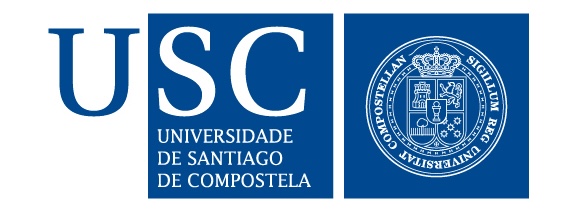Results will be displayed once the analysis is completed. This could take a few minutes.
Reference for theory article: Thermodynamics of Lipid Langmuir Monolayers: proposal of a new \(\pi\)-APL equation of state.
The model employed in SurfFitter, derived from basic thermodynamics equations, identifies the regions of pure phase and phase coexistence in the isotherm taking as fitting parameters all the APL,\(\pi\) values that mark the boundaries between phases (white dots in the figure). AG, the APL value at which water pores close, is not a fitting parameter but is arbitrary chosen for representations. See the article reference above for a more detailed explanation.
- At regions of pure phase \(i\), lipids occupy an average area per lipid betweeen \(A^i_{min}\) and \(A^i_{max}\). The surface pressure increases with the monolayer compression according o the elasticity modulus \(E^i\) of that phase.
- At coexistence regions, for any APL value, lipids in the \(i,j\) phases occupy an average molecular area \(A^i_{min}\) and \(A^j_{max}\), respectively, while the surface pressure is constant and equal to \(\pi^{ij}\).
The recorded isotherm might sometimes not capture some of the phases. For example, if the monolayer collapses before reaching the solid or condensed phase, if the isotherm was recorded exactly at the G-E-C coexistence temperature (\(T_0\)), or below (which would imply that the E phase is not present in the monolayer). When the model suspects that it is facing one of this cases, it might ignore the fitting of some of the APL, \(\pi\) parameters. In any case, the fitted parameters allow to extract additional thermodynamic information of the system:
| Degrees of surface coverage, \(\theta^i\) | The ratio of surface area occupied by each phase. |
| Surface concentration, \(\Gamma^i\) | The number of molecules in a certain phase per unit area of the total surface. |
| Elasticity modulus, \(E^i\) | It is the inverse of the compressibility modulus and is calculated for each lipid phase. It determines the rate of increase in surface pressure under compression. |
| Gibbs free energy, \(G\) | The change in energy provoked by a change in surface area. |
| First derivative of the Gibbs free energy with respect to the surface tension, \(\frac{dG}{d\gamma}\) | The rate of change of the Gibbs free energy with respect to the surface tension, which is equal to the surface area. At constant temperature, \(\frac{dG}{d\gamma} = - \frac{dG}{d\pi} = A\) |
S-solid, C-condensed, E-expanded, G-gas, b-bulk water, s-surface water.
Sistemas supramoleculares, nanobiomimética y biofísica molecular (SupraNanoBioMol) Universidade de Santiago de Compostela



surffitter@ciqus.usc.es | © 2025 | Licencia Apache 2.0